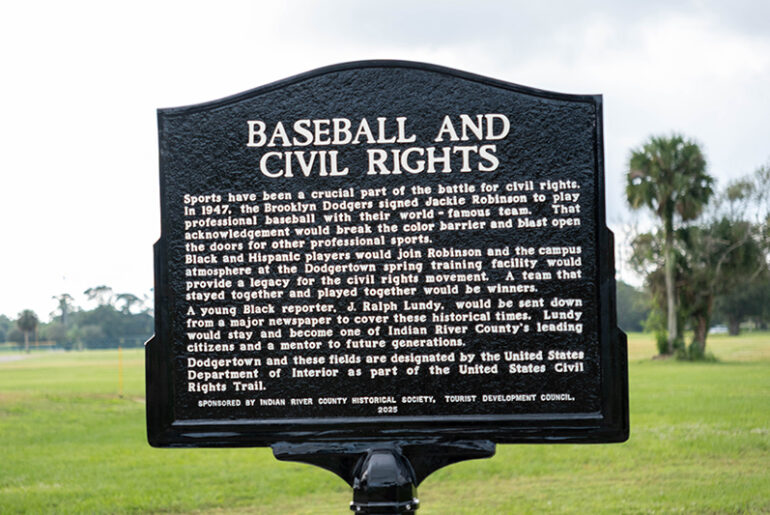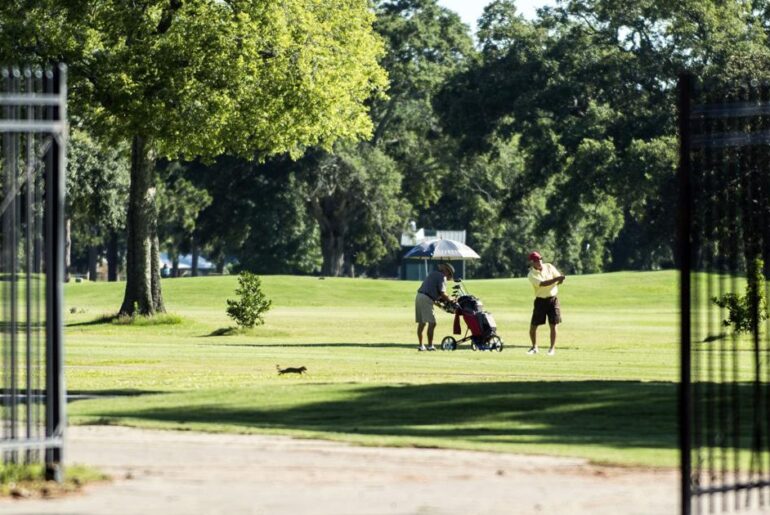Scientists estimate that in roughly five billion years, the sun will exhaust its supply of hydrogen, swell into “Red Giant” status and begin its slow death — engulfing the Earth and the inner planets in a wall of fire and ending life as we know it in our solar system.
That’s the bad news for those of us on Earth, including our more than 30,000 golf courses.
The good news is that, as far as golf’s existential crises go, that’s not too urgent! Before we can get to the bottom of that first question — what to do about the sun in five billion years? — we should have plenty of time to figure out the other existential questions, like overseas investment from sovereign wealth funds, the threat posed by the slow march of distance gains and the struggle of keeping an old, slow sport relevant in an increasingly young, attention-deficient world.
But as it turns out, the sun still has some luster as a golf issue in 2025. It’s a big enough problem to have encouraged Jay Karen, the chief executive officer of the National Golf Course Owners Association of America (NGCOA), to speak before the U.S. House Committee on Energy and Commerce on Thursday morning. And as Karen explained to Congress, the opportunity for American golfers is night and day.
Much as I would like to continue making corny astronomy puns for the remainder of this story, the actual substance here is actually quite relevant to the day-to-day lives of American golfers: Daylight Saving Time, the annual tradition whereby (most of) America “falls back” and “springs forward” by an hour each year. DST plays a critical role in the health of the golf business — potentially a multi-billion-dollar role, if you believe the NGCOA’s latest estimations.
That’s how Karen and the NGCOA found themselves before Congress, and why they are now on the front lines of the fight to make Daylight Saving Time full-time.
“Our data shows it would be at least a 1 percent uptick in the overall golf industry, and that’s at a minimum,” Karen said at the House Committee hearing. “I would estimate that [changing to permanent Daylight Saving Time alone would add] 2-5 percent in the golf economy overnight.”
The story of the movement for permanent Daylight Saving Time — and of the golf industry’s potential windfall — begins, like so many other American tales, on a battlefield in Europe.
The first U.S. experiment with Daylight Saving Time began in 1918 with the Standard Time Act, a law passed at the height of World War I aimed at encouraging energy conservation during the war effort. The legislation was controversial from the start. Farmers took to the streets to protest the loss of morning light and the spectacular annoyance of falling out of sync with the city folk who bought their products. The law was repealed shortly thereafter, and adopted again in the 1940s to assist the American effort in World War II.
In 1966, the national disagreement reached a tenuous compromise under the “Uniform Time Act.” The law installed America’s current half-DST, half-Standard Time approach — but the solution was a half-measure, and like many half-measures, it was tremendously unpopular with both sides of the debate.
The clock controversy quieted some in the 60s, but it never quite went away. In 1974, the U.S. government fiddled with permanent Daylight Saving Time to conserve energy usage during an oil shortage. (Voters detested the dark mornings, and the on-again, off-again system was reinstated.) In the ’80s and ’90s, a collection of consumer brands and citizen advocates formed the “Daylight Saving Coalition,” fighting for the return of permanent DST under the guise that it might bolster consumer spending. And in the early 2000s, the government expanded DST by an additional four weeks, giving Daylight Saving Time the majority of the annual calendar.
But none of these movements moved the needle quite as much as the quite-sudden effort that materialized in the U.S. Senate just three years ago, in March 2022, when legislators began debating a bill named the Sunshine Protection Act. The SPA, as it was called, was a simple text by congressional standards: It was just one page and a few hundred words in length. The goal was singular: To reinstate DST as the permanent law of the land, and it fell on sympathetic ears with the winter-weary Senate chamber.
After a brief debate, the SPA was put to a vote. The bill passed unanimously, receiving no shortage of social media fanfare. It was quickly sent to the House of Representatives for review and then forwarded to then-President Joe Biden’s desk for signing.

Inside Old Petty, Tom Doak’s new design in the Scottish Highlands
By:
Josh Sens
What happened behind closed doors in the days after that agreement remains a mystery, but what transpired in public is simple fact: The Sunshine Protection Act died on the House floor without ever receiving a vote. Some U.S. House members blamed “stalled momentum” for the inaction, while others said it simply wasn’t “a legislative priority.” Whatever the reason, the bill has stayed on the House floor without receiving a vote for more than three years, occasionally resurfacing for further investigation by smaller U.S. House “committees.”
On Thursday, Karen was invited to testify before one such group — the Committee on Energy and Commerce — on the potential impact of permanent Daylight Saving Time (or permanent Standard Time) on the golf industry. It did not take long for the head of the golf trade group to make his point.
“Our data shows that permanent Standard Time would cost the industry, at a bare minimum, $1.6 billion annually,” Karen said. “That’s approximately $200,000 lost in revenue per golf course, and 37 million lost rounds of golf.”
Karen said that golf depends upon what he calls “recreational daylight time,” or when the sun overlaps with people’s ability to be outdoors. American golfers overwhelmingly prefer to be outside in the afternoon and evening, which can generate 40 percent more revenue for courses than in the morning.
“It basically unlocks an amazing amount of inventory for the golf industry,” Karen said. “And that’s just the golf industry, but it translates to good health for Americans as well.”
According to the NGCOA, course operators agree that extra sun is good for business and golfers. The only concern, Karen said, was that a permanent shift to DST could affect some golf courses’ ability to give adequate time off to clubhouse staff and employees.
“A survey showed about 64 percent of our members support permanent Daylight Saving Time, while 83 percent agree that it would help their business,” Karen said. “Twenty-seven percent are for the status quo, and only 7 percent support permanent Standard Time.”
In the eyes of the NGCOA, there’s only one solution: If America is going to change its relationship with sunlight, a rollback (of the clocks) is needed.
“If we eliminate changing the clocks, we are in favor of permanent Daylight Saving Time,” Karen said.
At least for the next 4.9 billion years.







